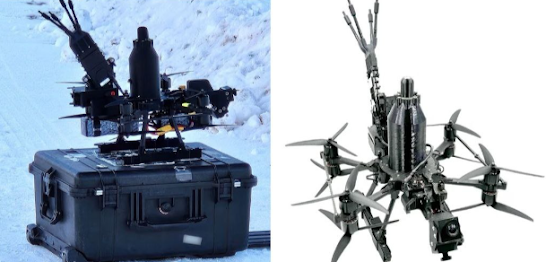From February 17 to 28, 2025, the U.S. Army will conduct its highly anticipated Arctic Forge 25 exercises, underscoring the growing strategic significance of the Arctic region for the United States, NATO allies, and Arctic nations. This large-scale military training operation aims to enhance cold-weather combat readiness and interoperability among participating forces, as climate change transforms the Arctic into a critical geopolitical arena.
The Arctic is no longer a peripheral region but rather a focal point of global interest due to its vast natural resources, emerging shipping routes, and increasing competition among major powers. As melting ice opens new opportunities for resource extraction and navigation, countries with stakes in the Arctic are ramping up their military presence and capabilities to secure their interests. Against this backdrop, Arctic Forge 25 serves as a demonstration of NATO's commitment to maintaining stability and deterrence in the region.
Approximately 330 American soldiers from the 11th Airborne Division and the 10th Mountain Division, both renowned for their expertise in mountain and cold-weather operations, will participate in the exercise. Joining them will be 40 Canadian military personnel and 500 Finnish military personnel, reflecting the importance of collaboration between Arctic and non-Arctic NATO members.
The primary goal of Arctic Forge 25 is to prepare troops for the unique challenges posed by operating in extreme cold environments. Key objectives include:
1. Enhancing Cold-Weather Combat Readiness: Soldiers will undergo rigorous training in survival techniques, winter mobility, and tactical maneuvers specific to icy terrains.
2. Improving Interoperability Among Allies: Joint exercises with Canadian and Finnish forces aim to strengthen coordination and cooperation, ensuring seamless integration during potential real-world scenarios.
3. Testing Equipment and Tactics: The exercise provides an opportunity to evaluate the performance of specialized gear and vehicles designed for Arctic conditions, allowing for adjustments and improvements.
4. Demonstrating Deterrence: By showcasing NATO's collective ability to operate effectively in the Arctic, the exercise sends a clear message to potential adversaries about the alliance's resolve to protect its interests in the region.
Climate change has accelerated the melting of polar ice caps, revealing previously inaccessible areas rich in oil, gas, and minerals. The Northern Sea Route along Russia's coast and the Northwest Passage through Canada promise shorter transit times for global trade, making these waterways economically attractive. However, these developments have also heightened tensions among Arctic nations, including the United States, Canada, Finland, Norway, Denmark (via Greenland), and Russia.
Russia, in particular, has been expanding its military footprint in the Arctic, establishing new bases and modernizing infrastructure. In response, NATO members and partner countries are bolstering their own capabilities to ensure a balanced power dynamic. Exercises like Arctic Forge 25 play a crucial role in this effort by fostering unity and preparedness among allied forces.
While the U.S. leads Arctic Forge 25, the participation of Canadian and Finnish forces highlights the importance of international cooperation in addressing shared security concerns. Canada, as an Arctic nation, brings valuable regional knowledge and experience to the table, while Finland, though not an Arctic Ocean littoral state, contributes its expertise in northern warfare developed over decades of defending its harsh climate.
This collaborative approach aligns with NATO's broader strategy of enhancing collective defense through joint exercises and capacity-building initiatives. By working together, member states can pool resources, share best practices, and develop standardized procedures that improve overall effectiveness.
Arctic Forge 25 represents more than just a military training exercise—it symbolizes the evolving priorities of the United States and its allies in the face of changing Arctic realities. As the region becomes increasingly vital to global security and economic interests, the ability to operate efficiently in extreme conditions will be essential for safeguarding sovereignty and promoting peace.
By bringing together troops from the U.S., Canada, and Finland, the exercise strengthens bonds among partners while reinforcing NATO's determination to uphold stability in the Arctic. As the world continues to watch this strategically important region, initiatives like Arctic Forge 25 serve as a testament to the resilience and adaptability of the transatlantic alliance.




.jpg)

























.jpg)
